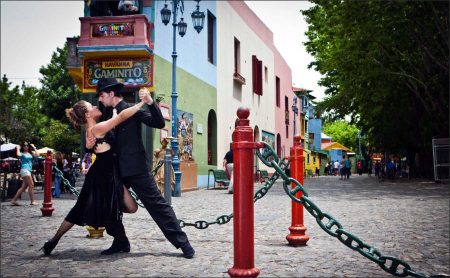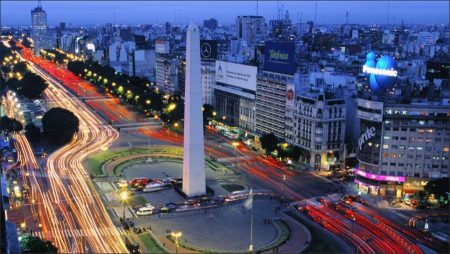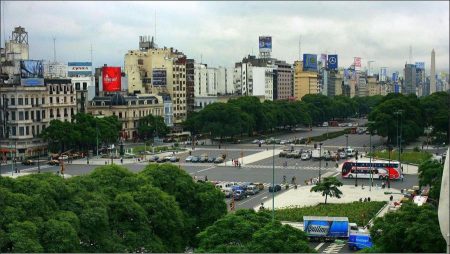Buenos Aires is a city that brilliantly combines the old and the new, the nostalgic and the contemporary, all against a backdrop of stunning architecture, modern culture and amazing cuisine. Becoming a true porteno (resident of Buenos Aires) does not mean having to tango or milonga like a local, but it does mean embracing the true spirit of this fascinating, cosmopolitan, sexy capital, and never having dinner before 10 pm.
Buenos Aires’ European architecture and heritage attract many tourists and expats, but it is also a truly Latin city, with all the passion and problems that implies. After the economic crash of 2001, it became an attractive, affordable, A-list city for Americans and Europeans looking to make their dollars and euros go farther. Now after a two-year period of furious growth, the economy may be slowing slightly, but is still on pace for a 9% expansion in 2011.
Fear not: the Malbecs and steaks are still affordable, and the fashion and nightlife scene remain one of the best in South America, or anywhere in the world. And if its food and fun are better enjoyed with the favourable exchange rate, its culture is recession-proof. The glorious architecture here ranges from Modernist masterpieces to Art Nouveau and Art Deco showpieces, and the various barrios (neighbourhoods) — from the markets and streetlife of San Telmo to the historical and cultural landmarks of Recoleta — have their own special flavour.
Where do you want to live?
Buenos Aires has 48 separate barrios along the Rio de la Plata. The most popular locations are in the east near the river and close to the centre, such as Retiro, Barrio Norte, Puerto Madero and Recoleta. Barrio Norte, which includes parts of Recoleta, Palermo Soho, Palermo Hollywood and Retiro, is attractive to families. Recoleta, because of its central location and attractions like the Recoleta Cemetery, is one of the more expensive downtown neighbourhoods. Puerto Madero has great restaurants, nightlife and shopping.
People are now also looking at moving into industrial neighbourhoods like Barracas in the southeast, where factories have been turned into expensive urban lofts. Young expats from Spain and Italy, large numbers of whom have emigrated to Buenos Aires because of their countries’ current economic crises, are living in the barrios of Belgrano, San Telmo, Palermo Soho and Hollywood.
Side trips
Outside the city there are many estancias (countryside ranches) for city dwellers to live the gaucho (cowboy) life, or just enjoy country life in the pampas, the grasslands outside Buenos Aires. San Carlos de Bariloche, the gateway to Patagonia and just a short flight away, is where portenos go to ski in winter or hike and trek in summer. Other summer getaways include the exclusive and cool beach town of Jose Ignacio, or glamourous Punta del Este in neighbouring Uruguay.
Flights from Ezeiza International Airport in Buenos Aires to New York take 11 hours, and it is eight and a half hours to fly to Miami. Within South America, there are frequent flights to Brazil and Colombia.
Practical info
Property in Argentina is bought in cash, usually in US dollars. There are no mortgages, although a few property developers offer some financing. Property prices have gone up 15%since last year, but they have not yet reached the pre-crash levels of a decade ago.
In posh Recoleta properties sell for between $350 and $550 per square foot, while in Palermo they cost about $280 to $370 per square foot — compared to $1,215 per square foot in Manhattan. Barracas properties cost about half of what they do in Palermo. Most expat buyers are from the US and Europe, with some Russian, Colombian and Chilean buyers moving in as well.
The recent currency controls put in place by the government have made it harder for Argentines to procure American dollars to buy property, but foreign buyers should find no problems. Expats who move here have to wade through a lot of bureaucracy and red tape (such as transaction fees and obtaining tax ID numbers), but the welcoming nature of the residents and the possibilities to be had in this exuberant city are well worth it.
Views: 424






